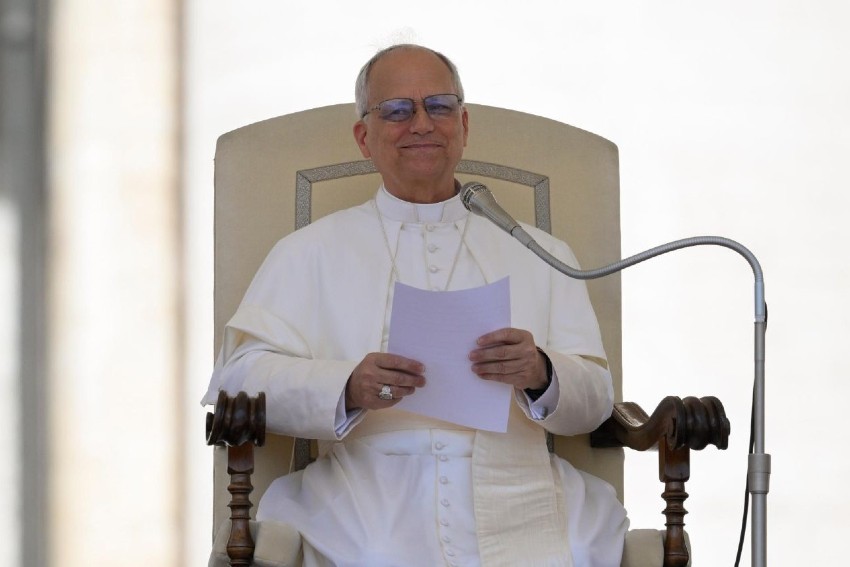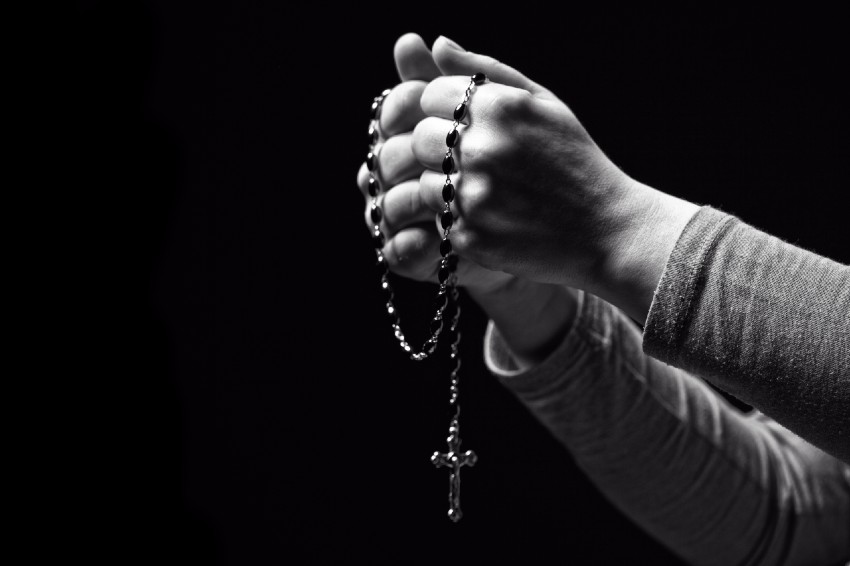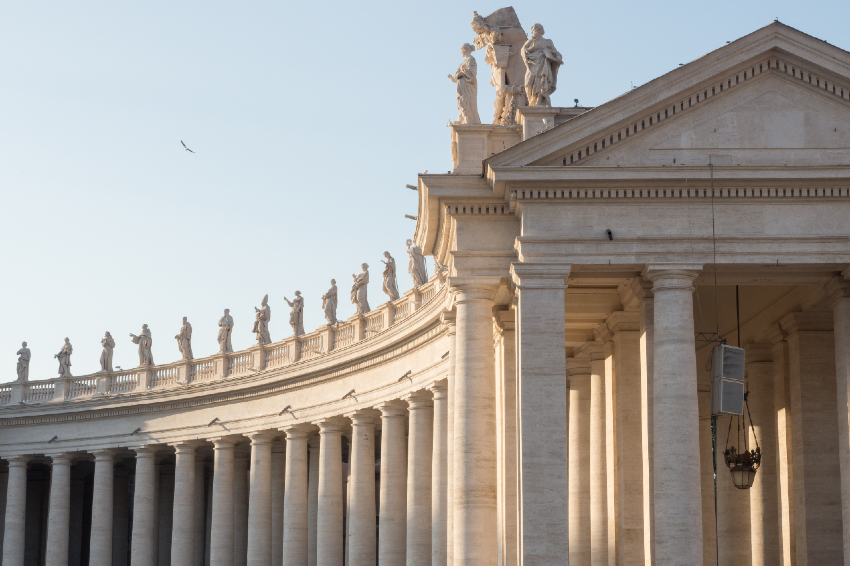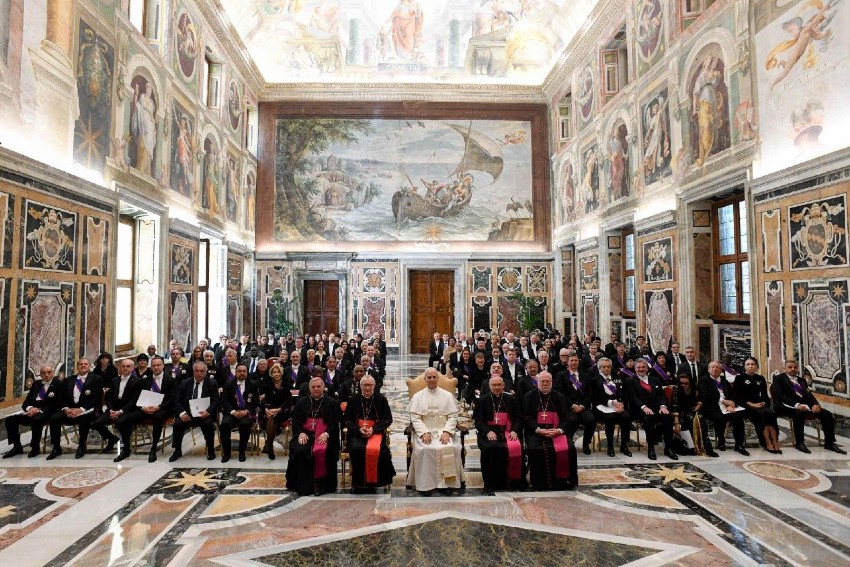
“Take the Ratzinger book on the liturgy. It will be one less item to sort through when the time comes…” —My father to me, when I visited with him in late 2016 or early 2017, when he was 90. He died three years later, on March 28, 2020 at the age of 93. I took the book with me, and still have it today (link)
Letter #72, 2024, Gaudete Sunday, December 15: Found it
I begin again after seven years, because today I found something I had been looking for for these past seven years.
Seven years ago, in late 2016 or early 2027, I visited my father, William, at his home in Connecticut, and he gave me the book pictured above, The Spirit of the Liturgy (2000), by Joseph Ratzinger.
“Take the Ratzinger book on the liturgy,” he said, as I prepared my bags to depart. “It will be one less item to sort through when the time comes…” Born in 1926, he had just turned 90.
So, on June 3, 2017, seven and a half years ago, I began to write about this book.
In Letter #29, June 3, 2017: The Spirit of the Liturgy (link), I wrote:
“My copy of The Spirit of the Liturgy contains many of my father’s notes on the text, some summaries, some underlinings, some observations… So my intention is to read through the entire book, and all of my father’s notes, and to write a commentary on the book, but also on his notes. In the process, I hope to come to a clearer understanding of the nature and meaning of the Catholic liturgy, and at the same time, to understand better the mind of Joseph Ratzinger, and of my own father. In a profound sense, then, this commentary will also be a type of exploration of my own relationship to two very different men who have influenced me deeply.”
Then I wrote: “To be continued.”
***
For a few days, I did continue, writing these articles:
June 4, 2017, Letter #30, 2017: Sunday, the Feast of Pentecost, The Spirit of the Liturgy, Preface (I do not find a link to this letter on our website(!), but I still find the letter in my old email; the letter dealt with the Preface of Ratzinger’s book; since I have no link to this letter, I quote a bit of it below)
June 5, 2017, Letter #31, 2017: The Spirit of the Liturgy, #3 (link) This letter dealt with the first pages of Ratzinger’s book
June 6, 2017, Letter #32, 2017: The Spirit of the Liturgy, #4(link); this letter dealt with reader’s responses to my previous letter, dealing with the first pages of Ratzinger’s book; I also cited Pope Francis at the beginning of this letter, saying this: “I am convinced that his (Don Luigi Giussani’s) thought is profoundly human and reaches man’s innermost longings. I dare say that this is a most profound, and at the same time understandable, phenomenology of nostalgia as a transcendental fact. There is a phenomenology of nostalgia, nóstos algos, feeling called home [Note: literally, “the longing for the return”] the experience of feeling attracted to what is most proper for us, most consonant with our being. In the context of Fr. Giussani’s reflections, we encounter instances of a real phenomenology of nostalgia [of “the longing for the return”].” —Jorge Mario Bergoglio, now Pope Francis, April 27, 2001, at the Buenos Aires International Book Fair, the largest in South America, presenting the Spanish edition of Don Giussani’s book L’attrattiva Gesù [The Attraction That Is Jesus]
June 8, 2017, Letter #33, 2017: The Spirit of the Liturgy #5 (link); this letter dealt with pages 16, 17, 18 and 19 of the book; and I ended, as usual, with a “to be continued”
***
But I did not continue.
As so often, I had made a promise, but did not keep it.
Not, I think, because I did not want to keep it, but because I did not want to keep it enough.
For some reason, I left off my series of letters on Ratzinger’s book, and on my father’s notes and commentaries on the book.
Life, I suppose, intervened.
***
But I always remembered one page of Ratzinger’s that I had read, a page that had struck me, and so from time to time I picked up the book, and looked for that page.
***
The problem was, in my memory, the page was toward the end of the book.
But the page was actually in Chapter 2 of the book, pages 24 to 34.
The page was actually page 28.
And page 28 had, in fact, been marked by my father with a grey sticker which he had pasted onto the page.
But, over time, that sticker had been folded over, so it no longer stuck out of the book…
So I would pick up the book and, relying on my false memory, start at page 200, or later, at page 150, or later, at page 100, and finally, at page 50, and I would seek that page, but never found it.
Only today, I woke up and said, “for Gaudete Sunday, I will start, this time at the very beginning, and read until I find the page.”
***
I did this in part because I received a text message during the night from a friend and fellow pilgrim, to whom I had expressed my weariness with regard to covering the Vatican.
“Many uncertainties makes what you do rather hard,” my friend wrote, “but you must keep going as your mission is nowhere near its end. In Christ and Mary. (name)”
***
And reading from the beginning, after about half an hour, I came across these words, at the bottom of page 27, then throughout page 28, — the words I had been seeking:
“Once again we face the question: What is worship?
“What happens when we worship?
“In all religions sacrifice is at the heart of worship.
“But this is a concept that had been buried under the debris of endless misunderstandings. The common view is that sacrifice has something to do with destruction.It means handing over to God a reality that is in some way very precious to man.
“Now this handing over presupposes that it is withdrawn from [here page 27 ends and page 28 begins] use by man, and that can only happen through its destruction, its definitive removal from the hands of man.
“But this immediately raises the question: What pleasure is God supposed to take in destruction?
“One answer is that the destruction always conceals within itself the act of acknowledging God’s sovereignty over all things.
“But can such a mechanical act really serve God’s glory?
“Obviously not.”
[And here follow the words I had remembered, and had sought for, off and on, for seven years…]
“True surrender to God looks very different.
“It consists — according to the Fathers, in fidelity to biblical thought — in the union of man and creation with God.
“Belonging to God has nothing to do with destruction or non-being: it is rather a way of being.
“It means emerging from the state of separation, of apparent autonomy, of existing only for oneself and in oneself.
“It means losing oneself as the only possible way of finding oneself (cf. Mk 8:35; Mt 10:39)
“That is why St. Augustine could say that the true ‘sacrifice’ is the civitas Dei [“the city of God”] that is, love-transformed mankind, the divinization of creation and the surrender of all things to God: Goad all in all (cf. 1 Cor. 15:28)
“That is the purpose of the world.
“That is the essence of sacrifice and worship.
“And so we can now say that the goal of worship and the goal of creation as a whole are one and the same — divinization, a world of freedom and love.
“But this means that the historical makes its appearance in the cosmic.
“The cosmos is not a kind of closed building, a stationary container in which history may be chance take place.
“It is itself movement, from its one beginning to its one end.
“In a sense, creation is history.”
***
Now, there is much more here, much more to study and understand.
But, essentially, what Ratzinger seems to have meant is that our lives are liturgical, and our choices are part of our worship, and the goal of this worship is the surrender of all things to that supreme reality which is the good, loving, holy God, and in so doing, to help to divinize creation.
“That is the purpose of the world.”
(to be continued)
Addendum
A quotation from Letter #30, from June 4, 2017:
A Book that Becomes a Pilgrimage
The face of Jesus is the final end of our search.
To see Him, and be seen by Him.
I can say it now, from the beginning.
But we still must travel from here to there, to come to the place where we may see Him.
(…)
How can this be, if our eyes are made only for, attuned only to, a material, photon-lit, light-wave mediated, reality?
The answer, of course, is that we must be given new eyes with which to see, and new minds with which to understand…
That is our quest, then — to place ourselves in a condition, in a place or state, where we may be transformed by the renewing of our minds, and of our eyes, so that we may see and understand things impossible for purely material or earthly eyes and minds to see or understand.
Fundamentally, the faculty of seeing, the ability to see, spiritual things is the result of… a gift.
A gift given freely, but for which we must in some way prepare ourselves.
(…)
=================
What is the glory of God?
“The glory of God is man alive; but the life of man is the vision of God.” —St. Irenaeus of Lyons, in the territory of France, in his great work Against All Heresies, written c. 180 A.D.

Page 28 of The Spirit of the Liturgy, with my father’s folded grey sticker on the lower left

A larger version of the previous photo of Page 28






Facebook Comments